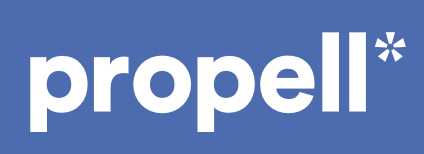
What are the Top Levers When it Comes to Cash Flow?
The Airborne Magazine team came across this very good article by Propell on dealing with cash flow in your business and they have consented to us republishing it for our readers. We hope you enjoy it as we did!
Managing your cash flow effectively is vital to running any successful business. You need to regularly analyse both your cash inflows and outflows to guide your financial decision-making.
Let’s look at the top levers you can pull to help you keep on top of your cash flow.
Improving the cash inflow of your business
There are 3 main levers you can pull to improve your cash inflows:
1) the pricing lever
2) the sales volume lever, and
3) the accounts receivable lever.
By strategically changing each of these levers you can change the outcome of your cash flow.
1. The pricing lever
An obvious way to increase your cash flow is to increase your prices. But you need to be careful that any price increase you implement doesn’t result in you losing sales that you otherwise would get. If you increase the price dramatically, you might lose lots of your customers to your competitors. While increasing the price can help to boost your cash inflow, you need to be strategic to ensure it won’t decrease sales (and in turn, cash inflow).
You should also focus your time and energy on those customers and products that are the most profitable for your business. Offering a variety of products or services can be great, but if you’re finding you don’t have enough time to focus on the tasks that generate a high profit margin because you’re stuck on tasks with a lower profit margin, you may need to reassess your offering.
2. The sales volume lever
Once you have analysed your pricing and identified your most profitable customers and products, you should try and increase your number of sales transactions in those markets.
You may need to focus on a marketing campaign or brush up on sales skills to increase the number of sales to existing customers and to identify new ones.
3. The accounts receivable lever
If your business offers credit to customers (for example 30-day accounts), you can improve your cash flow by encouraging them to pay faster. Ways that you can do this include:
- offering discounts for faster payment or penalties for late payment.
- reducing your payment terms. For example, offering 14-day accounts rather than 30-day accounts).
- invoicing earlier. For example, if you are doing project work, progressively invoicing as milestones on the project are reached.
- making it easier for your customers to pay you. For example, by offering the option to pay via card or offering buy now, pay later services.
- sending payment reminder notices before customers are overdue.
Decreasing your business cash outflows
There are four levers you can pull to reduce your business cash outflows:
1) the reducing expenses lever
2) the managing inventory lever
3) the staffing lever, and
Once again, we’ll look at each of these levers in turn.
1. The reducing expenses lever
This is the most obvious outflow lever. It’s crucial to analyse your business expenses and to sort them into essential and non-essential expenses. Eliminate or reduce as many non-essential expenses as you can.
You should also analyse the timing of your expenses. For example, could some expenses be better aligned with the timing of your cash inflows? You may be able to negotiate more suitable payment terms with your suppliers, or find cheaper suppliers without compromising on quality.
2. The managing inventory lever
If you have a lot of cash tied up in inventory, reducing your stock levels will help to improve your cash flow. You can do this by ordering less stock. Of course, it’s important not to order so little that you run out of stock and miss out on sales.
3. The staffing lever
Staffing is a significant expense for most businesses. It’s important to attract good staff and to make the best use of their skills. You can reduce cash outflows on staffing by:
- making sure your business isn’t overstaffed during any of your operating times.
- outsourcing relevant business tasks to contractors rather than employing staff and having to pay additional ongoing costs.
- reducing staff turnover (which in turn reduces recruitment and training costs).
Each of these levers has a direct impact on your cash flow. If you have each of these factors optimised and you don’t want to change any of these components, exploring business finance is another option to manage your cash flow better.

Propell is an Australian based fintech, helping SME’s to run and grow their business with payments, lending and cash flow products. They are different to other SME finance businesses because we aim to help small businesses take a holistic approach to their cash flow and finances.
Propell help small businesses understand their financial position a little better, and help them make the right choices for financial products that suite them.
You can learn more about Propell and Business Pulse by visiting their website here: http://propellme.com.au


